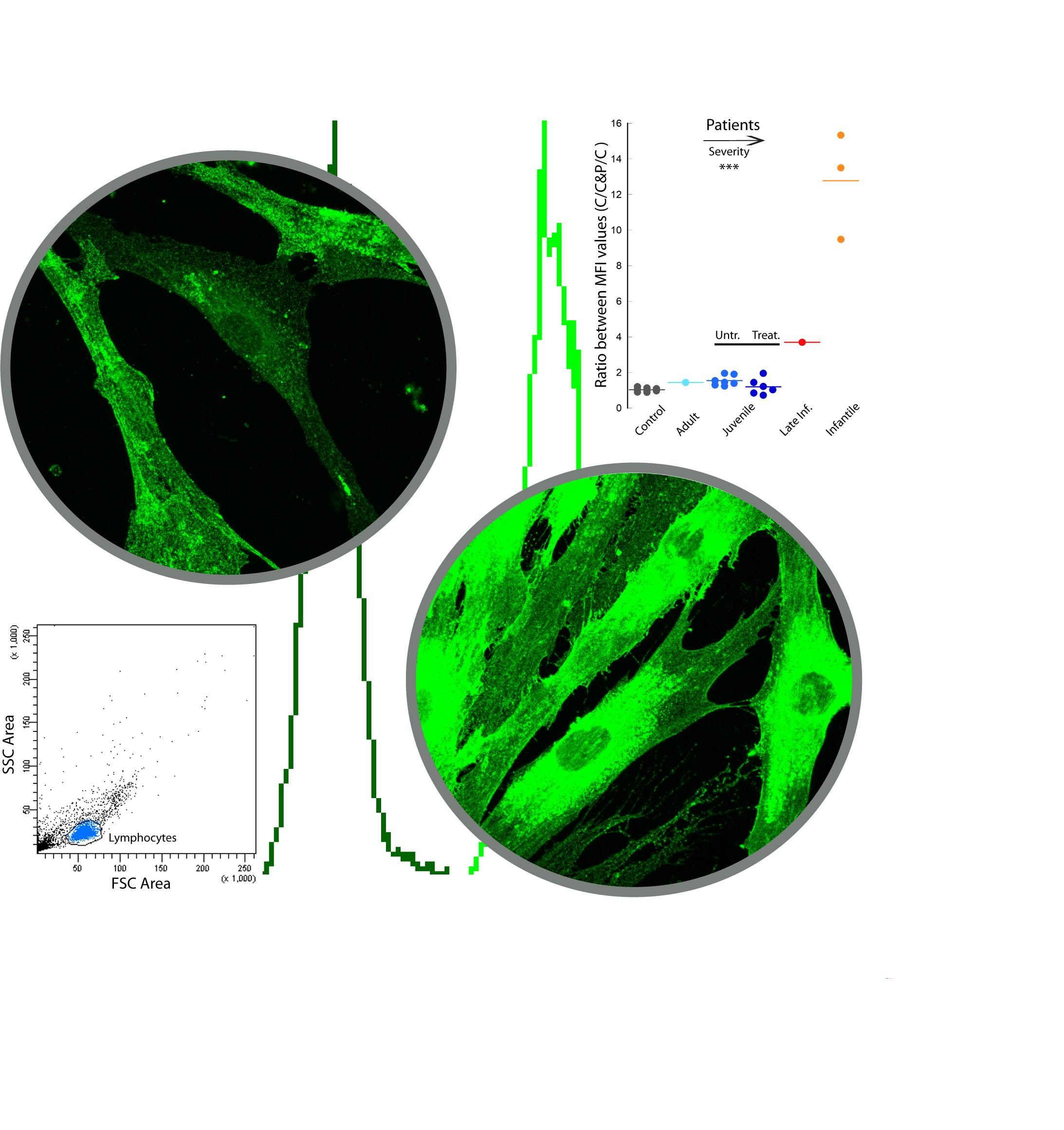Biomolecular imaging and diagnosis

The changes in GM1 ganglioside levels in patients affected by GM1 gangliosidosis can be followed by means of fluorescence microscopy and flow-cytometry, a useful approach that can be used also for the diagnosis and management of other lysosomal diseases.
Description
The group is devoted at applying advanced microscopy techniques and imaging approaches based on fluorescence to tackle the understanding, diagnosis and treatment of neurodegenerative and metabolic diseases. We are currently focused on three main objectives:
1. Studying the molecular basis of Alzheimerís disease, in particular the influence of cholesterol and neuronal activity on the processing of the amyloid precursor protein.
2. Investigating the release from nanoparticles and diffusion of drugs by means of single molecule tracking within the context of nose to brain delivery of biopharmaceutics to treat Multiple Sclerosis.
3. Translating basic research methods to the clinical diagnosis of infantile metabolic neurodegenerative diseases, such as GM1 Gangliosidosis.
To know more
INO Staff
Calamai Martino (Contact Person)Capitini ClaudiaCicchi RiccardoCredi Caterina

